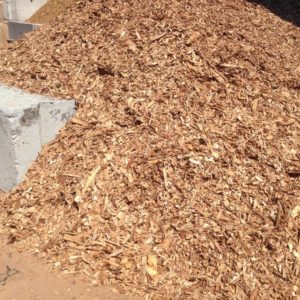Wood Chips
Description of Wood Chips:
Wood chips are small to medium sized pieces of wood formed by cutting or chipping larger pieces of wood such as trees, branches, logging residues, stumps, roots, and wood waste.
Uses:
Between trees felled during winter storms and some selective tree felling to keep gardens light and airy, chips will be everywhere…and the pile next to the woodshed will be towering before you know it.
Wood chips are a form of organic gold, with all kinds of amazing uses beyond the obvious. How can you be using wood chips in your garden and around the house?
1. Mulch:
It’s old, but classic. It accomplish two important goals for your plants: they help them retain water and stay warm. In addition, they suppress the growth of weeds in garden beds, making it easier for you to maintain them over time. Spread a layer of wood chips over the garden in spring to get it looking clean, sharp, and beautiful, and repeat in fall to protect your plants from freezing temperatures and snow. Be aware that you may need to add nitrogen fertilizer to supply the needs of your plants, and make sure to churn up or remove old mulch before remulching so your plants aren’t buried.
2. Composting material:
It contain a great deal of carbon, and they’re great for building up the soil. Just by using them as mulch, you’ll be improving the condition of your soil — but you can also add them to your compost as a carbon or “brown” layer. They’ll break down and enrich the dirt, making it that much more nutritious for the plants.
3. Fuel:
Like other wood products, wood chips can make great fuel, and they’re especially useful for fire starter and small, controlled fires. They’re also ideal for biomass reactors, which can be used to power engines in addition to providing heat.
4. Walkways:
Another classic use of wood chips: as a walkway substrate. They’ll even out the ground and provide weed suppression in the garden and lawn areas. Before you create a wood chip walkway, lay down a weed barrier to increase its lifetime. Be aware that wheelchair users and other people with mobility impairments might have trouble navigating a walkway that’s not carefully graded, and be sure to remove any large debris regularly so it won’t trip people.
5. Decor:
If you’re working with dried or artificial flowers, try using wood chips in the vase to stabilize them and hold them upright. Wood chips are also used in the construction of furniture and works of art, where their variable color, shape, and pattern can create a great deal of visual interest.
6. Play area surface:
Wood chips are a natural alternative to crumb rubber, and can help cushion falls and provide a safe, nonslip surface for kids and the young at heart. Create a designated play area in your yard with wood chips, swings, and other supplies — but make sure you inspect it regularly and keep it in good condition to reduce the risk of injuries.
7. Erosion control:
While wood chips are a temporary fix, they can address an area of the yard where erosion is occurring while you develop a long term plan. Use them to create a barrier to prevent soil loss, especially during heavy rains, while you talk to a landscaper about better drainage options to keep the yard in good condition.
Reduces Nitrogen:
It can reduce the amount of nitrogen available in the soil for plants, as the organisms that decompose the wood use up the nitrogen. This may not be a problem when used in areas where you do not want any plants to grow, but when used in gardens or flowerbeds, the wood chips may cause nitrogen deficiency in your plants.
Showing the single result


 +380 63 265 7682
+380 63 265 7682 info@europepellets.com
info@europepellets.com